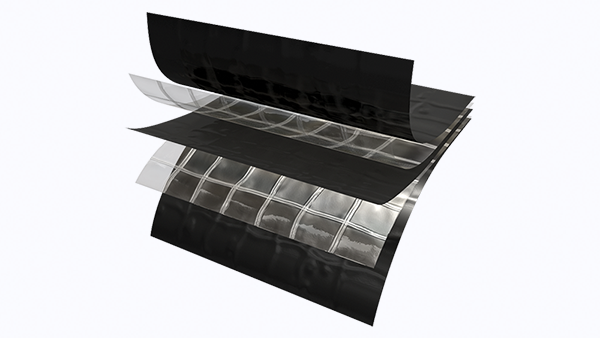Many improvements have been made to polyethylene film since it was first used to cover greenhouses in the 1960s.
Most polyethylene film is manufactured as a coextrusion of three layers with different polymers and additives. Each layer contributes to the quality of the film and enhances its performance.
When it comes to plastic sheeting, it is important to understand the strength and thickness of the film, its composition, additives, chemical makeup, and the job it must perform.
These factors will help determine if a film is fit for the job at hand. However, it is important not to judge film not is not only on its mil thickness. For example, if the film is in the sun, it needs UV protection additives to maintain its strength.

Film life
The life of polyethylene film is limited due to degradation processes induced by sunlight and heat. Copolymer poly is a low-cost material that is good for one season. Therefore, it is a good choice for seasonal greenhouses, overwintering structures, and high tunnels. Avoid construction-grade material that has less strength.
Greenhouse grade poly is warranted for four years or more and costs about twice as much as co-poly. It contains an ultraviolet stabilizer that reduces degradation. If additional strength is needed, such as in high wind locations, a woven poly or nylon scrim-reinforced material should be considered.
Thickness
The one-year co-poly film is available in 3, 4, and 6 mil thicknesses. Three or 4 mil film is common for one year use on narrow tunnels and overwintering houses. However, greenhouse grade material, only available in 6 mil thickness, is best for multi-year applications.
Condensate control
Anti-condensate also referred to as anti-drip, this is a wetting agent that reduces surface tension allowing condensation to flow rather than form droplets. It can be sprayed on the film or incorporated into the center layer and usually lasts a couple of years.
Condensation droplets reduce the light transmission and can lead to disease problems when they drip onto plants. Therefore, an anti-fogging additive may be included to prevent early morning and late afternoon fog formation in the greenhouse.
Reduced nighttime heat loss
This additive traps the radiant heat inside the greenhouse from escaping. In heated greenhouses, the savings have been measured to 10–20 percent, depending on whether the sky is cloudy or clear. In double layer poly installations, the infrared (IR) film is always installed as the inner layer to retain nighttime heat.
Research has shown that infrared film can increase plant color and/or compactness and accelerate crop development. This is most likely due to increased nighttime plant temperature. Costing only a couple of cents more per square foot, the payback is only a few weeks for a greenhouse heated all winter.
Reduced daytime heat gain
In areas with strong sunlight, blocking part of the infrared spectrum can lower the inside temperature up to 10ºF. Selective pigments can be added to the outside layer in copolymer film to reflect or absorb the near-infrared radiation, which is not used for plant growth.
Research has shown that the higher the outside temperature, the larger the temperature difference achieved by using these films. Advantages include lower cooling costs, greater worker comfort, less need for irrigation, reduced plant stress, and improved fruit taste.
Ultra-violet light
Bees need ultraviolet (UV) light to navigate. So if a grower uses bees to pollinate plants in the greenhouse, purchasing a film that allows some of the ultraviolet light energy spectrum to pass through may be important. Otherwise, ultraviolet blocking film will reduce whiteflies, thrips, aphids, and other insects. It can also control some fungal diseases.
Controlled diffusion
Light diffusion is another property that manufacturers have recently added. This increases the amount of diffused light that reaches the plants, reducing scorching and increasing light transmitted to lower leaves. It is essential with tall vegetable crops. Research has shown that diffused light also reduces fungus spore development and insect propagation.
Conclusion
The layers between the plastic laminates contribute to the plastic’s overall properties. Whether it is controlled diffusion or thickness, these properties influence the way plastic performs.
Griffolyn®'s patented, high-strength reinforcement provides superior puncture, tear, and abrasion resistance. Materials of construction can be formulated to provide many important performance characteristics. From outstanding weathering characteristics to custom features, such as fire retardancy, anti-static properties, corrosion inhibition, or heat shrinkability, Griffolyn® products offer the performance you need.


